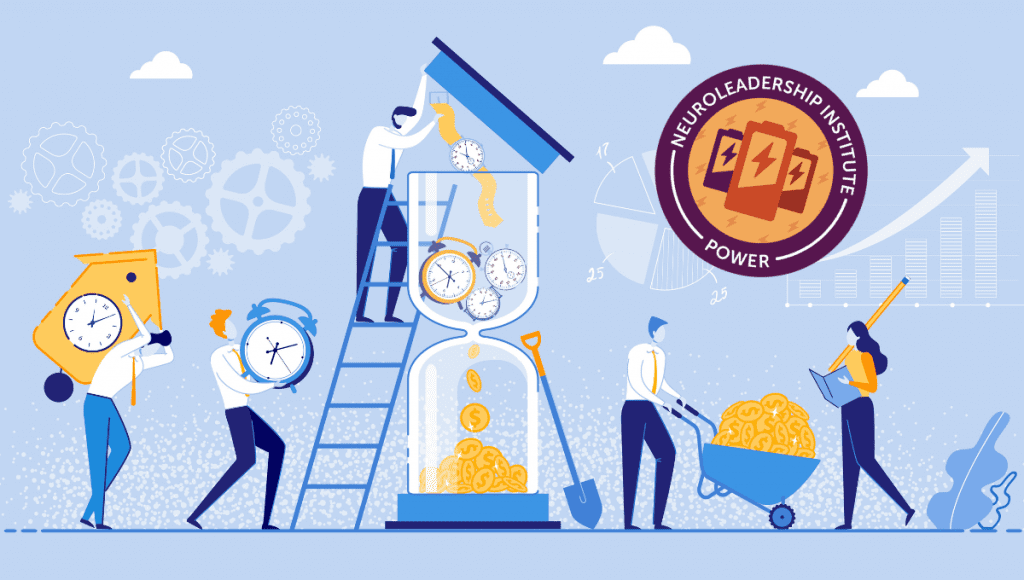Amid imminent layoffs, fears of a looming recession, and a continuing struggle to adapt to hybrid work, organizations are more concerned than ever about keeping employees focused. But in their quest to keep workers on track, more companies are resorting to electronic surveillance — time trackers and productivity points, activity scores, and idleness warnings — to make sure employees are doing the work they’re supposed to be doing.
It’s easy to understand why companies want to ensure remote workers stay productive — no one wants to feel like they’re paying people to sit around in their pajamas and watch “The Bachelorette.” But these tools of control and surveillance have one thing in common: They take autonomy away from employees at a time when they need it more than ever, leaving workers feeling demoralized and humiliated.
As we’ve written before, surveilling employees is the wrong approach to assessing productivity. When employees feel like they’re being monitored, it robs them of their autonomy — one of the five fundamental drivers of workplace satisfaction — and triggers a threat state in the brain that interferes with the ability to think clearly.
More importantly, these tools fall short of their stated goal of measuring productivity. It’s not just that they fail to capture offline work and time spent thinking, learning, and mentoring others. They’re also representative of a deeper problem: Organizations systematically undervalue activity that’s hard to measure.
That’s a problem since these intangibles are some of the best predictors of success. Here are five of the most undervalued aspects of work.
Institutional knowledge
Perhaps the most undervalued intangible of all is institutional knowledge: the totality of information, expertise, and understanding an employee develops during their time at an organization. This includes their understanding of systems and processes, culture and strategy, behaviors and habits, as well as practices, policies, and workflows. It also includes their practical know-how, such as work techniques, who knows what, how different departments fit together, what resources to consult, what initiatives have been tried and failed, and what existing solutions have yet to be implemented.
Institutional knowledge also encompasses relationships. Over time, employees form connections with their colleagues — which makes work more efficient — and develop bonds with clients, sources, vendors, and subject matter experts. When an employee leaves the company, those relationships go with them.
Unfortunately, organizations often undervalue institutional knowledge, assuming everyone is expendable and anyone can be upskilled. But training a new employee only goes so far since much of what employees need to know to excel at their jobs isn’t written down and is never shared with their co-workers.
Institutional knowledge isn’t just hard to measure — it’s also hard to capture and transfer. For many knowledge workers, it would take a lifetime to write down everything they know about their job. And even with enough time, not everyone has the writing skills needed to transmit their knowledge in a way others will understand. That’s one of the many reasons why retaining knowledgeable employees is more cost-effective than recruiting new ones.
Helping others
The success of any organization depends on the degree to which employees help each other. When an employee takes the time to brainstorm with a teammate, give feedback on their latest project, or direct them to a helpful resource, it fosters a virtuous cycle of reciprocity that benefits everyone.
But organizations undervalue the time employees spend helping their colleagues. Employees are judged, rewarded, and compensated based on how well they do their job — hitting their targets and achieving their goals — and for the most part, helping others do their jobs better isn’t in the job description.
That’s unfortunate, since studies show that organizations perform better when they cultivate a culture of generosity. There’s a word for these voluntary activities that fall outside the scope of an employee’s enumerated contractual obligations: organizational citizenship behavior. And a large body of research has shown that organizations with higher rates of it display superior efficiency, higher productivity, and greater overall profitability.
The value of these behaviors isn’t captured when organizations measure productivity by tracking keystrokes or mouse activity. By instead giving employees the latitude to talk through problems and exchange ideas with their peers, leaders can foster a culture of cooperation and supportiveness that benefits the entire organization.
Communication
Another intangible that’s too rarely discussed, incentivized, or rewarded is leaders’ communication practices. Managers are often judged on the productivity of their teams but rarely on how well — or how often — they’re communicating with their employees.
That’s a mistake since effective communication is crucial for productivity and efficiency. A meta-analysis of 247 studies on relationships between leaders and employees found that when managers communicate well — clearly articulating their expectations and offering thoughtful feedback — employees display increased commitment to their organization and more frequent helping behaviors.
Good communication doesn’t just mean conveying information and giving feedback. Equally important is listening deeply, making employees feel that they have a voice, and demonstrating that their needs and concerns are being heard and understood. This requires not just making the space to listen but also creating sufficient psychological safety for employees to feel comfortable to speak up.
Non-collaborative time
In their quest to collaborate productively, break down silos, and create “alignment,” organizations can get so focused on teamwork that they forget the value of good old-fashioned solitary toil.
There’s no doubt that effective teamwork is critical for an organization. From the pyramids of Egypt to the mRNA vaccines for COVID-19, we think of invention and innovation as social processes, knowing that teams of people working together can achieve astonishing feats that would never be possible for an individual. But that doesn’t mean collaboration is all that matters.
On the contrary, a recent study found that when people collaborate constantly while trying to solve complex problems, the quality of solution actually declines. Social influence leads to copying, undermining the beneficial effects of cognitive diversity — like the way sharing ideas too early on in a brainstorming session reduces their quality. People hear one good idea and stop thinking, leading to premature convergence on a suboptimal solution.
This might imply that the best approach is no collaboration at all — to let the highest performers work independently without letting low performers stop them prematurely. But actually, the study found that groups produced better solutions when they first let people work on their own and then come together to compare notes and iterate. Counterintuitively, low performers’ ideas helped the high performers achieve even better solutions. The answer, according to the study: “Organizations should be redesigned to intermittently isolate people from each other’s work.”
The value of nothing
Companies often measure productivity by tracking crude metrics such as number of emails sent or number of leads produced. But there’s a problem with judging productivity with a single number: You risk incentivizing the wrong behaviors. If you judge and reward an employee based on how many leads they produce, for instance, you’ve created an incentive for employees to generate as many leads as possible regardless of quality — a phenomenon known as Goodhart’s Law.
Organizations have a natural bias toward rewarding what’s produced rather than what’s removed, prevented, or simply absent. Many software companies, for instance, measure productivity by tracking lines of code written. But this metric ignores the value of refactoring or removing code — and the reality is that an engineer who spends their day deleting slow code can have an immense impact on a product’s speed and efficiency.
The solution is to acknowledge that doing a job well doesn’t always leave a trace — at least not one that’s easy to quantify. Good management is often invisible. Like a law enforcement agency working to prevent terrorist attacks, doing a good job may mean nothing happens, and that, too, should be acknowledged and rewarded.
Organizations must resist the impulse to resort to electronic surveillance and combat the tendency to ignore what’s difficult to quantify. By valuing and rewarding what’s most important, not what’s easiest to measure, organizations can boost retention and keep workers happy, engaged, and productive.






